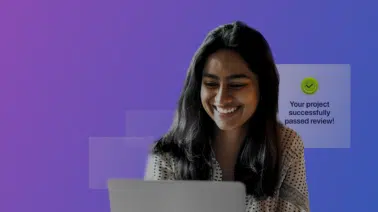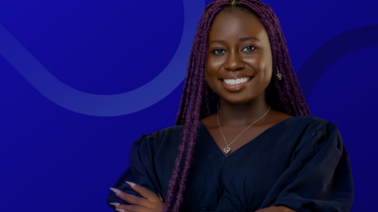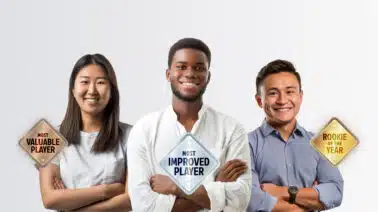The world of education is full of binary arguments, with perhaps the broadest and most tenacious being the ongoing debate around “traditional” vs. “non-traditional” systems. Other examples and variations include “academic” vs. “vocational”; “online” vs. “classroom”; “university” vs. “non-university”; and “public” vs. both “private” and “charter.” But when it comes to education, it’s not about “traditional” vs. “non-traditional” anymore, and true education disruption means going beyond the binary to promote lifelong learning for a learning economy.
Beyond The Binary
Many educational futurists would likely agree that these binaries are no longer truly relevant to the issues we face in education today. In a recent article by Dr. Liz Alexander (Co-founder, Leading Thought) entitled Women of Foresight: Changes in Education for Future Student Success, Anne Boysen (Founder, After the Millennials) refers to “an artificial boundary between theoretically and practically-based education”:
“Most aspects of our current educational system are designed for an industrial model that won’t work much longer. There is an artificial boundary between theoretically and practically-based education … Colleges need to train the next generation to become more entrepreneurial, sacrificing neither the strategic nor the tactical. This will become even more important when artificial intelligence starts taking over our jobs.”
Education Disruption
Her sentiments align quite closely with statements made recently by Marc Andreessen (General Partner, Andreessen Horowitz) who—in an interview given recently to Timothy B. Lee at Vox—discussed both the future of education, and artificial intelligence. He also elaborated on the idea of disruption, and what that looks like for education:
“You can’t educate the world with the existing system. The long-run opportunity is the real disruption opportunity. The classic explanation of disruption is not about a better solution for someone who’s already well-served. It’s the underserved market. And it just so happens that most of the kids in the world are a giant underserved market right now.”
If we are indeed entering a new, post-binary education world that is ripe for progressive disruption, where are the needed solutions to come from?
The Politics of Education
The current political landscape in this country might hold some potential for change, depending on the direction November’s elections take. Hillary Clinton, the Democratic presidential candidate, has announced a program focused on lowering the cost of higher education through subsidies for public institutions, and bringing down interest rates on student debt. But at the same time, she has been criticized for having a narrow understanding of the online education landscape, as represented by her comments around bringing “integrity” to online education.
Donald Trump, the Republican presidential candidate, has direct experience with an arena often blamed for the reputational challenges online education sometimes faces—he was the founder of a for-profit education company called Trump University that ultimately failed, and is in fact still mired in multiple lawsuits. While the company has emerged as a campaign issue at various times, Trump has focused his attention largely elsewhere, most notably calling for significant reductions in the size of the Department of Education, and the end of Common Core.
In the end, one would probably be safe in saying that neither candidate is offering anything overtly revolutionary to the education conversation, at least not at this time. By comparison, Andreesen’s internationally-minded perspective does actually seems the more legitimately disruption-focused.
Thinking Globally
Headlines like this one from an article in The Telegraph make clear that the stakes are different at the global level: The internet is key to the future of education in Africa.
Bringing broadband to schools could transform lives in the poorest parts of Africa. Once online, kids can learn skills that last a lifetime.
This is a kind of pragmatic disruption, one driven less by revolutionary ideals, and more by on-the-ground realities. Here is Andreesen again:
You have so many kids around the world. Even if you had a new Andrew Carnegie or Leland Stanford who decided to go build physical campuses in all these countries, it’s a numbers problem. You can’t build enough campuses. You can’t train enough teachers. You can’t educate the world with the existing system. The long-run opportunity is the real disruption opportunity.
Ultimately, it might not be about binaries at all. It might not be about theories or philosophies. It might simply come down to the stark realities that Andreesen lays out—you can’t build enough campuses or train enough teachers to meet the world’s education needs.
Understood in this way, cutting-edge online education isn’t one side of a binary any more than a Harvard education is the other side. We might instead imagine a Udacity and a Harvard as interdependent and complementary alternatives co-existing and working within a global education ecosystem that is broadly designed to address global learning needs.
The Learning Economy
That is not in fact the current case, of course. Harvard and Udacity are still a binary in many ways. But things are changing dramatically as we move further into what is being called the “learning economy.” Parminder K. Jassal (Founding Executive Director, ACT Foundation) is one of the voices profiled in the Women of Foresight article, and she asserts that we must “recognize our transition to a learning economy, where performance is the new measuring stick.”
Jeffrey Selingo, in his U.S. News & World Report article The Emergence of a New Learning Economy, writes:
Millennials have stimulated the growth of the on-demand economy with Uber and Airbnb. Now they are helping to shape a new learning ecosystem in higher education, as well, where education is consumed “just-in-time” rather than “just one time” in our lives.
If we understand the learning economy to be a perpetually dynamic system in which knowledge and skills are economic resources and the learning process is the means by which knowledge and skills are accrued, then it follows that learning itself must of necessity be ongoing and lifelong, because there will always be new things to learn, and new requirements, reasons, and incentives to learn those things.
Lifelong Learning
Udacity President and Co-Founder Sebastian Thrun offered a quote recently during a Quora session that echoes Sellingo’s “just-in-time” comment, and evidences a shift in thinking the likes of which may ultimately lead us out of education’s binary wilderness:
Education is no longer a one-time event but a lifelong experience. Ask me how my vision for the future of education will enable every person on the planet to have affordable access to the best educational resources throughout their lives. I hope that new forms of online education will double the world’s GDP.
By replacing the singular noun of “an education” with the plural concept of “educational resources,” we move conceptually beyond the binary, towards a world in which education is open, ongoing, adaptive, and efficient. A world in which experiences are personalized, offerings are diverse, and systems are inclusive. A world in which learning is lifelong, and we all have a seat in the classroom.




